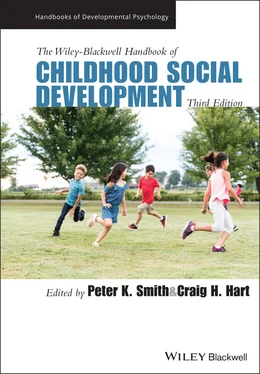Children and adolescents are the age groups most likely to live in poverty, with their families having increasingly reduced access to educational opportunities, decent housing, and food security (Hirsch, 2015). In a UK study funded by the Rowntree Foundation, of the 12 million working‐age adults and children in poverty, 8 million live in families where at least one person is in work. Employment no longer leads to lower poverty and further reductions of the incomes of low‐income families through rising inflation, changes to benefits and tax credits, and high housing costs continue to reduce the incomes available for families in poverty (JRF Analysis Unit, 2017). Inequality is thought to impact on well‐being and mental health via two related mechanisms. First, inequality causes direct stress due to social comparisons where less well‐off parents and children develop feelings of shame, moral failure, and “social defeat” when comparing themselves with economically better‐off people. Second, inequality erodes social trust and social cohesion, “leading to social fragmentation and leaving people vulnerable to psychosocial stressors” (Burns, 2015, p. 110). Both mechanisms shape socialization processes in that children grow up internalizing the causes and effects of disadvantage, resulting in feelings of shame and a sense of failure.
Trends in mental ill health have changed over time, manifesting themselves earlier, during childhood, and becoming increasingly gendered. Since the 1990s, traditional patterns of mental ill health appear to be reversed with the rates of depression increasing faster among children at younger and younger ages while rates of depression among people over 40 have remained stable (Zahn‐Waxler et al., 2008). Over the last 5 years, research has shown a growing gender divide in young people’s mental health and wellbeing (Finch et al., 2014; Hartas, 2019; Patalay & Fitzsimons, 2017). Less pronounced among boys and young men, self‐reported rates of anxiety and depression are rising sharply among preadolescent and adolescent girls, revealing a deeply worrying trend.
During childhood and as they enter adolescence, girls are told that gender equality is advancing, with gender having become a “protected” characteristic. However, what they experience in almost all domains of their life is quite the opposite. Since the 1990s, feminism as a social justice movement has turned into a form of corporate feminism, promoted because it makes “good business sense,” which seeks to empower girls and women through their participation in employment and position in the market (Fraser, 2009). This form of empowerment does not question existing economic structures but becomes part of them and further emboldens them. As inequality rises so does gender inequality because girls are disproportionally hit by cuts in public services (e.g., education). A report for Young Women’s Trust – a charity that supports women aged 16–30 in poverty or on low or no pay – showed a third of young women feel more anxious now than this time last year, due to money worries, lack of affordable housing, and insecure jobs. A quarter of women reported to be in constant debt and one in 10 is skipping meals (Young Women’s Trust, 2017).
These gendered forms of inequality reflect and reproduce neoliberal frameworks of accumulation that are inherently inequitable and exploitative. As Fraser (2009) and Eisenstein (2009) pointed out, whereas second‐wave feminism tended to focus on the interconnectedness of economic, cultural, and political injustice, in ensuing decades, these struggles have been sidelined by corporate feminism that does not account for unequal social and political structures. Instead, it has helped to legitimize a version of capitalist society that “runs directly counter to feminist visions of a just society” (Fraser, 2009, p. 99). Gender inequality shapes child socialization practices because it emboldens practices related to bullying, body shaming, sexual harassment, and everyday sexism. A study by Bucchianeri et al. (2014) found verbal abuse and sexual harassment to be closely connected to children’s well‐being, particularly in girls who reported lower self‐esteem and body satisfaction, depression, and self‐harm. Body shaming, weight‐based harassment, and sexual harassment are particularly potent correlates of mental ill health among girls resulting in reduced well‐being.
Since the 1970s, family time and child socialization practices have intensified. In countries of the global north, parents increasingly spend more time with their children. At the same time, child socialization has become less “social” and more interpersonal, predominantly located within the family, reflecting wider neoliberal trends. Amongst them, the psychosocial orientation of family policy, the increasing politicization of parenting and care, inequality, and political polarization and social crises shape children’s experiences of growing up. It is not easy to untangle their effects on child socialization especially as they promote a view of social and emotional development and learning as means to an end, a continuous process of self‐improvement. Clearly, the neoliberal restructuring of society has reduced the scope of family as a civic institution whose goal is to socialize children as citizens rather than consumers or future investment. Child socialization is shaped by parents’ attempts, from an early age, to maximize their children’s life chances. It is class based and has taken different forms from concerted cultivation to more nuanced types of support offered by different fractions of middle‐class parents with access to various forms of capital.
Children flourish in a civic society with a strong communitarian ethos and social trust bonds, relying on networks that bring mutual benefits where state responsibility towards social care and service provision is at its heart. Child socialization in the global north is surrounded by discourses of rights but we need a radical shift in the balance between rights and responsibilities/obligations, especially as unprecedented crises change the timbre of our lives. As we currently experience with the appearance of the Covid‐19 pandemic, when social crises occur dramatically a window into family functioning and child socialization opens wide. We see parenting and socialization to be further intensified, children’s physical and social spaces reduced, and virtual encounters increased. We see low‐income parents struggling to offer concerted cultivation to their children when even the accomplishment of natural growth becomes a mounting struggle. Inequality and its manifestations become starker and micro‐management of private family life more excessive. There is a glimmer of hope though in that people are rejecting fragmentation and division and are actively seeking to redefine common good, and redesign social arrangements and institutions to better align with the support and care families need to raise their children.
1 Aarseth, H. (2018). Fear of falling–fear of fading: The emotional dynamics of positional and personalised individualism. Sociology, 52(5), 1087–1102.
2 Archer, L., DeWitt, J., & Wong, B. (2014). Spheres of influence: What shapes young people’s aspirations at age 12/13 and what are the implications for education policy? Journal of Education Policy, 29(1), 58–85.
3 Bellis, M., Lowey, H., Leckenby, N., Hughes, K., & Harrison, D. (2014). Adverse childhood experiences: Retrospective study to determine their impact on adult health behaviours and health outcomes in a UK population. Journal of Public Health, 36(1), 81–91.
4 Brown, G. L., Craig, A. B., & Halberstadt, A. G. (2015). Parent gender differences in emotion socialization behaviors vary by ethnicity and child gender. Parenting, 15(3), 135–157.
Читать дальше












